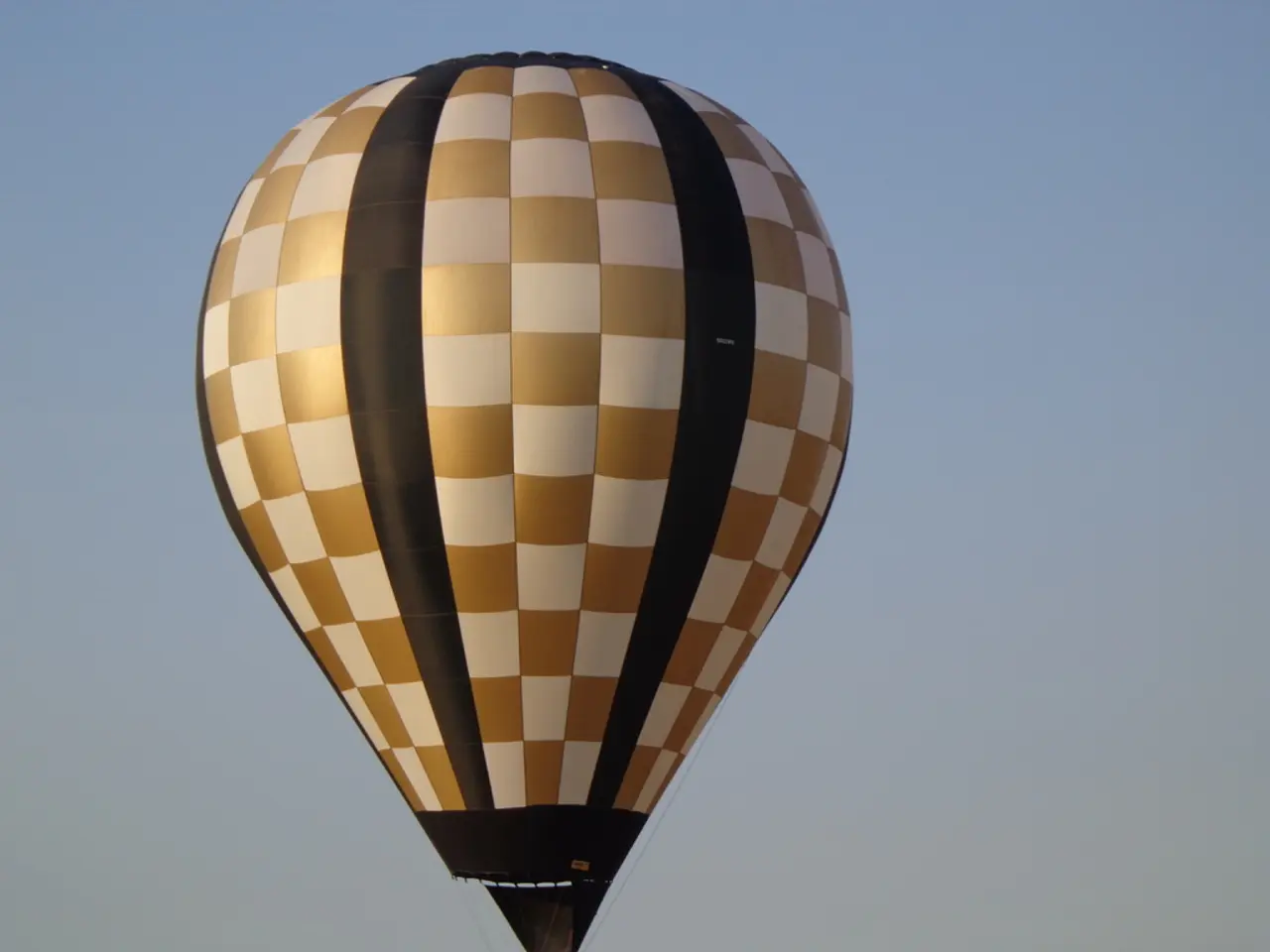Simple Guide on Crafting a homemade Lung Model
In a fun and interactive learning experience, a DIY balloon lung model has been designed to help kids understand the respiratory system, focusing on inhaling, exhaling, diaphragm, and the role of lungs. This hands-on project requires just a few household items: 2 balloons, a sports drink bottle, scissors, and some straws or tubes.
The smaller balloons inside the bottle represent the lungs, filling with air when pressure drops and deflating when pressure rises, providing a visible demonstration of the lung inflation and deflation process. The bottle acts as a rigid, sealed "chest cavity," and the air pressure inside it changes as the diaphragm balloon moves, mimicking how the diaphragm muscle changes chest volume in the human respiratory system. A straw or tube connected to the lung balloons acts like the trachea and bronchi, allowing air to flow in and out.
To create the diaphragm, a larger balloon or membrane is stretched on the bottle's bottom. By pulling the diaphragm balloon downward, it increases the internal volume, creating a partial vacuum, and air flows into the lung balloons, simulating inhalation. Pushing the diaphragm balloon up reduces volume and forces air out of the lung balloons, demonstrating exhalation.
This simple yet effective model offers a visual and physical demonstration of the key mechanics of breathing: diaphragm contraction causing lung inflation (inhalation) and diaphragm relaxation causing lung deflation (exhalation). It provides an engaging way for learners to understand how changes in chest cavity volume regulate air pressure and control breathing in humans.
For those who wish to delve deeper, suggestions include making a DND model, learning about animal cells, creating a heart model, or even crafting their own X-ray prints. Additionally, extending the activity by using a larger bottle and larger balloons can help learners observe the effects of scale on the "lung balloon."
The balloon lung model is just one part of the respiratory system. The diaphragm, a thin muscle located below the lungs and heart, contracts and flattens when you inhale, increasing the volume and decreasing the air pressure in your chest, causing air to be sucked in through your nose and mouth.
To further enhance learning, it is suggested to try making a DIY stethoscope to listen to the lungs and learn more about their function. The respiratory system is crucial for maintaining certain levels of oxygen and carbon dioxide in the body to keep it alive.
So, gather your materials, and let's get started on this exciting DIY balloon lung model project!
- This DIY balloon lung model project is designed to help kids play and learn about the earth's respiratory system.
- The model provides an interactive method to understand key elements like inhaling, exhaling, diaphragm, and lungs.
- The project requires only a few household items: balloons, a sports drink bottle, scissors, and straws or tubes.
- In this project, the smaller balloons inside the bottle represent the lungs, visually demonstrating inflation and deflation.
- The bottle serves as the "chest cavity," and the changes in air pressure inside it mimic the movement of the human diaphragm muscle.
- To create the diaphragm, a larger balloon or membrane is stretched on the bottle's bottom, simulating the diaphragm muscle contraction and relaxation.
- The art of science comes alive with extra activities such as making a DND model, learning about cell structures, crafting a heart model, and even creating X-ray prints.
- For a more immersive experience, try making a DIY stethoscope to listen to the lungs and learn about their functions.
- Beyond the balloon lung model, the diaphragm plays a crucial role in the respiratory system, helping to maintain proper oxygen and carbon dioxide levels for health-and-wellness and fitness-and-exercise.




